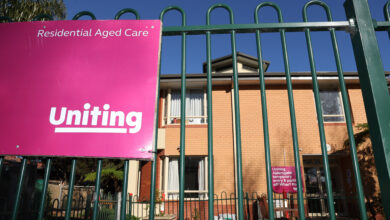Massive rural primary care deficit is confirmed
Report findings promote need for improvements in the bush.
Two new reports show people in country Australia are missing “out badly” on access to primary health services, according to the National Rural Health Alliance.
Between them, they show a primary care deficit in rural areas in 2006-07 of at least $2.1 billion.
Despite its “grim findings”, the reports - one from the Australian Institute of Health and Welfare and the other an analysis by the NRHA - the alliance said they come at a good time for promoting improvements in rural health services, with new Medicare Locals charged with improving primary care and required to produce “healthy communities” reports.
The AIHW report on 2006-07 figures deals with the 56 per cent of recurrent health expenditure that can at present be broken down by region. The NRHA report extrapolates to health care more broadly.
A new report from the Australian Institute of Health and Welfare, coupled with additional analysis by the Alliance, has added significantly to public knowledge about the regional distribution of health services and expenditures.
Between them the reports show a primary care deficit in rural areas in 2006-07 of at least $2.1 billion.
Both reports confirmed that in 2006-07 people in country Australia were missing out on access to primary health services that should have been available locally to ensure their ongoing good health and to reduce the need for acute hospital care.
Based on the two reports the alliance estimates that five years ago there was a rural primary care deficit of at least 2.1 billion dollars. This was comprised of a $660m out-of-hospital Medicare deficit, a half a billion dollar underspend through the Pharmaceutical Benefits System, and at least a billion dollar inequity relating to dental and allied health services (including for other pharmacy and aids and appliances).
Dr Jenny May, Chairperson of the Alliance, said that what is of greatest concern is that between 2001 and 2007 this health underspend worsened by about 10 per cent.
“It is to be hoped that the health reform in train and the regional focus of the Government will succeed in turning this trend around.”
In addition to the deficits measured in the two reports, she said there is also relatively poor access to appropriate aged care beds and services in rural area – particularly given the high proportion of Indigenous people in remote areas.
Because of these massive underspends on primary care, people in regional and remote areas have higher rates of hospitalisation than their peers in the cities, resulting in the government having to spend $830 million extra in 2006-07 on what the Alliance estimates is some 60,000 extra acute care hospital episodes. In those areas hospitals are also used for primary care and for aged care – services for which they are not most suitable.
The reports shows that in 2006-07 country people missed out on 25 million services just from doctors, specialists, diagnostic services and PBS scripts. This is equivalent to more than three and a half services and scripts a year for every man, woman and child in rural and remote areas.
Email: [email protected]




